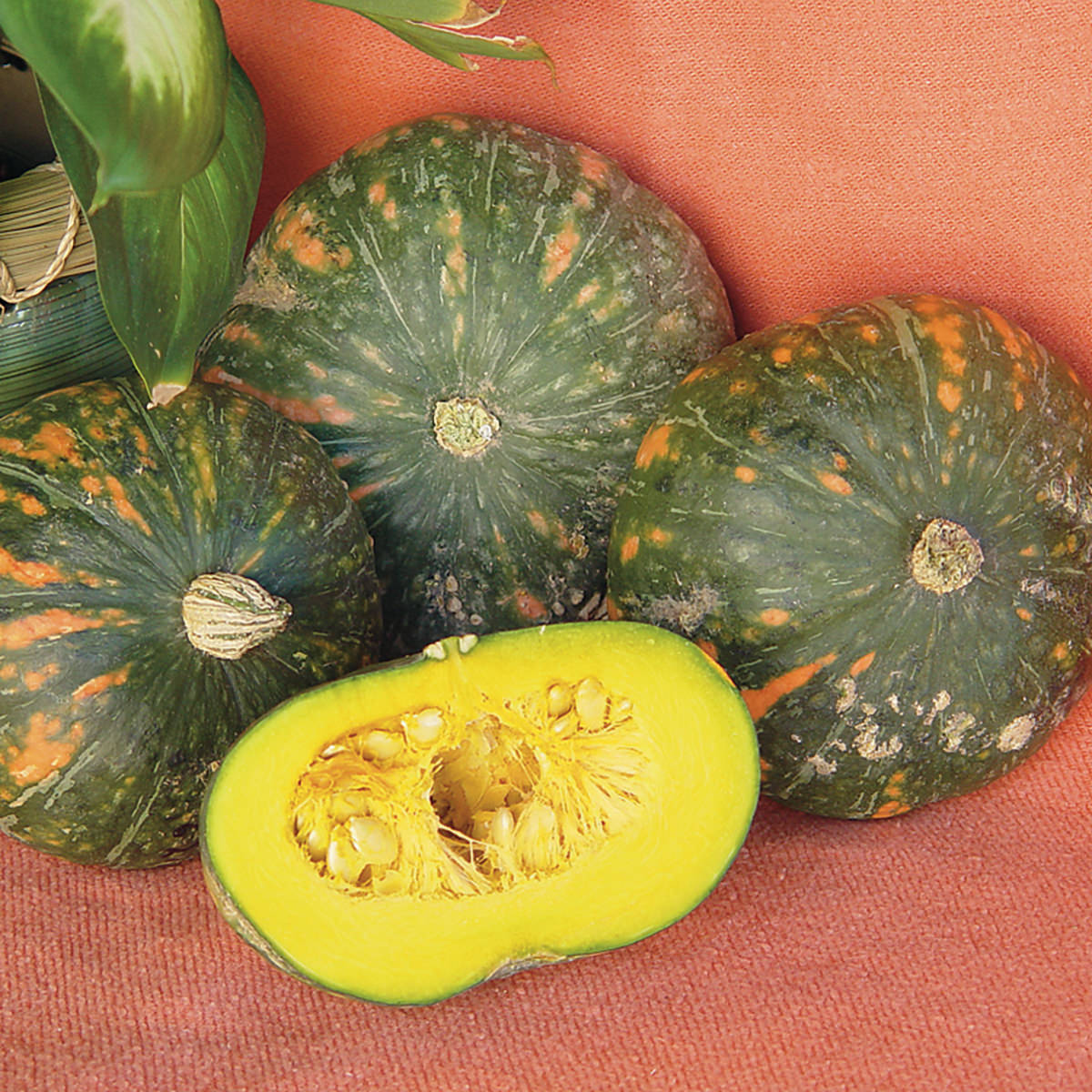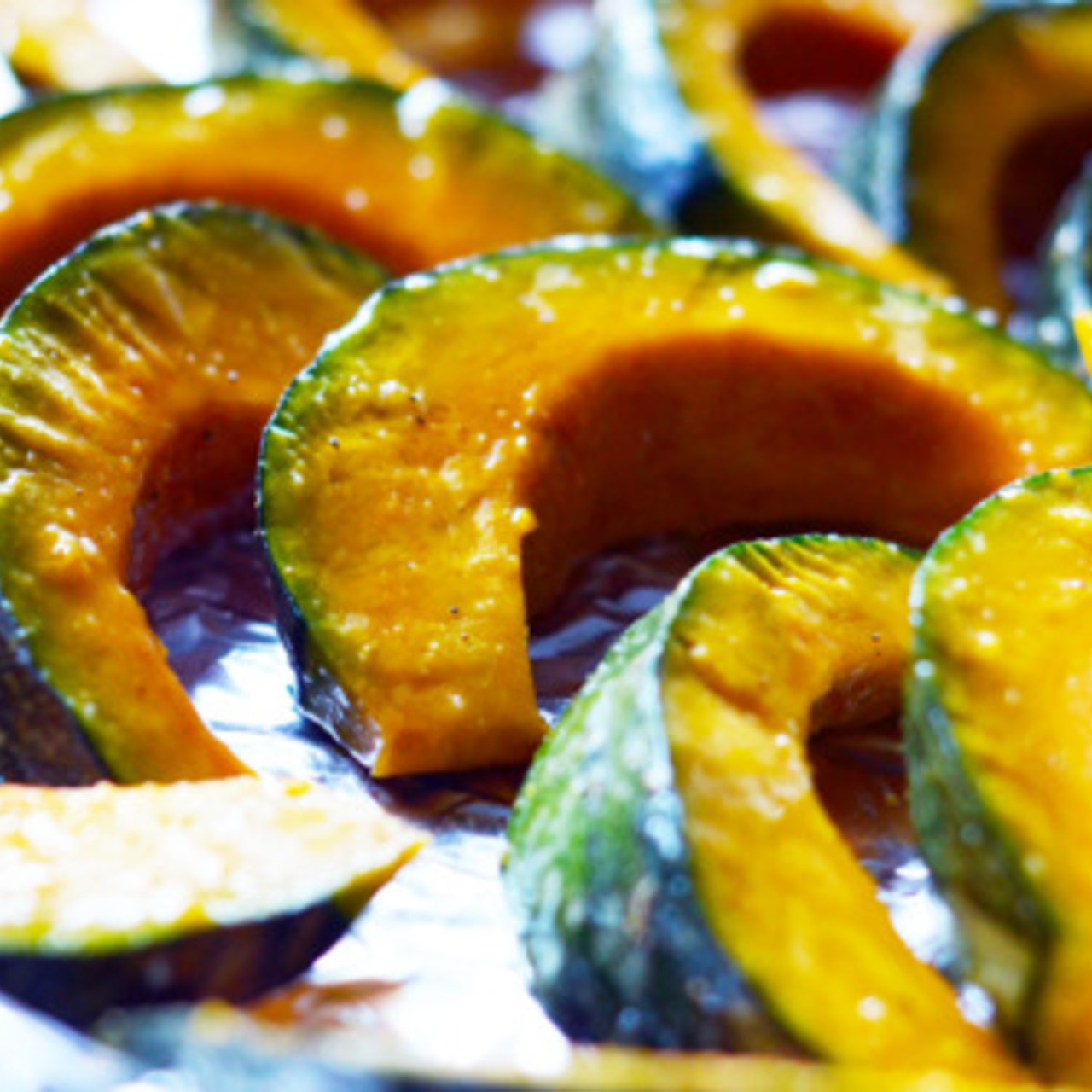

Kabocha squash commands a high price in the Japanese market, so in the 1980’s, it was introduced to Tonga in efforts to create a cash crop for the country.

Kabocha squash is also known by many names in Japan including kuri kabocha which translates to nutty pumpkin, a nod to the pumpkins flavor and a taste, and is also referred to as haku haku. In Japan, Kabocha squash is traditionally consumed around the time of the winter solstice with shiruko or adzuki beans in a sweet soup as it is believed to help boost the immune system and help prevent colds during the winter months. It will keep 1-3 months when stored in a cool and dry place. Kabocha squash pairs well with pears, apples, lemon, kale, spinach, eggplant, garlic, sage, parsley, shallots, cilantro, nutmeg, clove, curry spice, honey, brown sugar, coconut milk, butter, cream, Italian sausage, and parmesan cheese. When cooked and pureed, it can be used to make bread, croquets, desserts, cakes, and sauces. It can also be roasted on its own, combined with other root vegetables, and battered and fried tempura style or used in sushi. Kabocha squash holds its shape well when cooked and can be added in cubes to gratins, risottos, soups, stews, curries, and pasta. For ease in cutting, the squash can first be microwaved for a few minutes to soften and can then be cooked with or without the skin. The hard shell of Kabocha squash can be a challenge for some to cut with a knife when uncooked. Kabocha squash is best suited for cooked applications such as roasting, steaming, sautéing, baking, frying, and braising. The seeds of the Kabocha squash also contain a significant amount of zinc. Kabocha squash provides vitamins A and C, some B vitamins, calcium, iron, and fiber. Kabocha squash is favored for its excellent storage capabilities, diverse culinary abilities, and was originally developed to be a sweet and superior flavored cooking squash. In Japan, the term Kabocha refers to a generic grouping of many varieties of Japanese winter squashes and pumpkins, but outside of Japan, it refers only to the Kabocha squash varieties. Also known as the Japanese pumpkin, Kabocha squash comes in many different varieties of varying colors, and its name can have many diverse meanings in cultures across the world. Kabocha squash, botanically classified as Cucurbita maxima, is a sweet squash variety that is a member of the Cucurbitaceae family along with gourds and pumpkins. Kabocha squash is available year-round, with peak season in the fall through winter. When cooked, Kabocha squash has a finely grained, dry, tender texture with a buttery, sweet, and rich, nutty flavor reminiscent of sweet potato and pumpkin. The thick flesh is spongy, dense, and a deep yellow-orange with a central cavity filled with stringy pulp and many flat, cream-colored seeds. The firm, textured, coarse rind is a dull, deep green mottled with light green spots and pale, uneven stripes. Kabocha squash is small to medium in size, averaging 1-8 pounds, and is round, squat, and flat at the top and bottom with a short, corky, light brown stem.


 0 kommentar(er)
0 kommentar(er)
